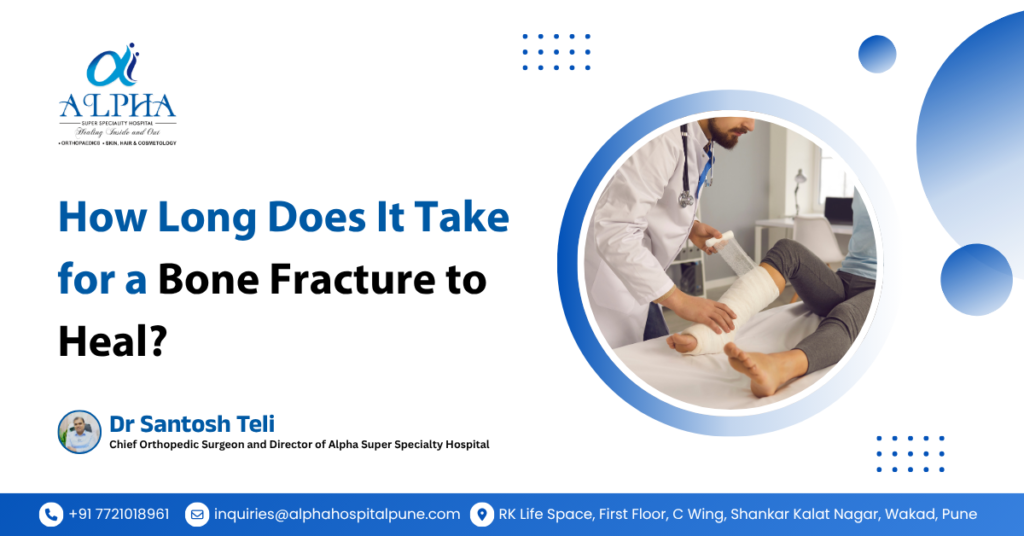Bone fractures are a common injury that can occur due to accidents, sports injuries, or osteoporosis. Understanding the healing process is crucial for proper recovery and to prevent long-term complications. Dr. Santosh Teli, a renowned orthopedic surgeon, explains the factors that affect bone healing and how long it typically takes.
Understanding Bone Healing
When a bone fractures, the body initiates a natural healing process that occurs in three main stages:
- Inflammatory Phase (1-2 Weeks)
Immediately after the fracture, the body forms a blood clot around the broken bone. This clot provides a framework for new tissue growth and helps protect the area from infection. During this phase, patients often experience pain, swelling, and bruising. - Reparative Phase (2-6 Weeks)
In this stage, the body starts forming soft callus tissue around the fracture. Gradually, this soft tissue hardens into a bony callus, bridging the gap between broken bone segments. Proper immobilization with a cast, splint, or brace is essential during this period. - Remodeling Phase (Several Months to Years)
The final phase involves bone remodeling, where the newly formed bone strengthens and reshapes to regain its original structure. The duration of this phase varies depending on the fracture type and individual health factors.
Factors That Affect Bone Fracture Healing
The time it takes for a fracture to heal can vary widely. Some key factors include:
- Age: Younger individuals tend to heal faster than older adults.
- Type and Location of Fracture: Simple fractures heal faster than complex or compound fractures. Weight-bearing bones may take longer to recover.
- Nutrition: Adequate intake of calcium, vitamin D, and protein is essential for bone regeneration.
- Overall Health: Conditions like diabetes, osteoporosis, or smoking habits can slow down healing.
- Treatment and Care: Proper alignment, immobilization, and adherence to doctor’s instructions accelerate recovery.
Typical Healing Time
Healing times vary depending on the bone and severity of the fracture. For example, small bones like fingers may heal in a few weeks, while larger bones like the femur or tibia may take several months.
Note: Healing times are approximate. Each patient’s recovery may vary.
Tips for Faster Bone Healing
- Follow your orthopedic surgeon’s advice strictly.
- Keep the affected area immobilized as prescribed.
- Eat a nutrient-rich diet with calcium, vitamin D, and protein.
- Avoid smoking and alcohol, which can slow bone repair.
- Attend all follow-up appointments for X-rays and evaluations.
- Gradually start physical therapy once approved to regain strength and mobility.
When to Seek Immediate Medical Attention
Consult Dr. Santosh Teli immediately if you notice:
- Severe pain or swelling after a fracture
- Numbness or tingling in the affected area
- Signs of infection such as redness, warmth, or pus
- Movement or deformity in the cast or splint
Conclusion
Bone fractures require patience and proper care for optimal healing. While the healing timeline varies depending on multiple factors, following medical advice, maintaining good nutrition, and avoiding risky activities can significantly improve recovery. For expert guidance and personalized fracture treatment, consult Dr. Santosh Teli, your trusted orthopedic surgeon.

